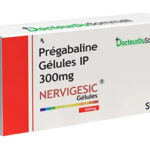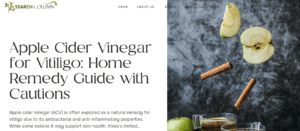Not all honey is created equal. Some jars offer more than sweetness—they carry healing power, deep floral flavors, and rare compounds. Here’s how to tell the difference.
The Confusion Around “Healthy Honey”
You stand in the aisle, staring at rows of golden jars. Labels boast terms like “organic,” “wildflower,” “raw,” and even mysterious phrases like “UMF-certified.” The prices range wildly. Why does one small jar cost four times more than another?
The short answer: it’s not just about sweetness. It’s about where the honey comes from, how it’s processed, and what properties it retains.
Many people searching for better wellness options hear the buzz about premium honey types. But knowing which honey actually delivers health benefits—and not just hype—is far from obvious.
When Buzzwords Become Barriers
The problem lies in labeling and assumptions. Most consumers assume that all honey is essentially the same. Sweet, sticky, and good for a sore throat.
But this misunderstanding causes issues. People pay high prices for honey expecting it to have antibacterial or healing properties, only to discover it’s little better than processed sugar. On the other end, some hesitate to buy premium jars, fearing the markup is just clever marketing.
This confusion isn’t harmless. Some individuals, especially those with weakened immune systems or recurring infections, rely on honey with genuine medicinal value. Choosing the wrong kind can mean missing out on the natural support they need.
Real-World Consequences: A Case from Parramatta
To see this issue in practice, let’s look at a real story from Parramatta.
Sara, a school teacher in her mid-30s, struggled with recurring tonsillitis and sinus infections. Tired of antibiotics, she turned to natural remedies. At her local market in Parramatta, she picked up a jar of “premium bush honey” that was marketed as “natural antibacterial.”
After using it daily for two months, there was no noticeable change in her condition. She later learned through her naturopath that the product was raw, yes, but not high in the specific compounds known for real antibacterial benefits.
The game-changer came when her friend recommended a trusted jar that carried a Unique Manuka Factor (UMF) rating. Within weeks, she noticed improvement in her throat health and fewer flare-ups. While no honey is a miracle cure, the switch had a significant impact.
The price? Nearly triple what she paid initially.
But the result? Worth every dollar.
The Key Differences: It’s What’s Inside That Counts
So, what made Sara’s second choice so much more effective?
Here’s where the manuka honey vs raw honey comparison becomes critical.
- Raw honey is unprocessed and unheated. It retains pollen, enzymes, and natural antioxidants. It’s great for daily immune support and a healthy alternative to processed sugars.
- Manuka honey comes from bees that pollinate the manuka bush, native to New Zealand and parts of Australia. This honey is tested for compounds like methylglyoxal (MGO) and given a UMF rating, which indicates its antibacterial strength.
Raw honey can be fantastic, but manuka honey is in a league of its own when it comes to targeted healing.
That’s why it’s critical not to confuse them, especially if you’re using honey as a natural remedy.
But Does Expensive Mean Better?
Not always. Some premium-looking jars are just beautifully packaged raw honey. On the other hand, manuka honey best brand labels often come with certification. Brands like Comvita or Manukora are rated for MGO levels and UMF strength.
When choosing honey:
- Look for a UMF or MGO rating if you’re buying manuka.
- Check the source: real manuka honey typically comes from New Zealand or certified Australian suppliers.
- Avoid jars that list added sugars, blends, or unverified claims.
Don’t just buy based on price or a rustic label.
When Should You Invest in the Higher Grade?
If you’re using honey to:
- Support wound healing,
- Soothe chronic throat issues,
- Improve gut health naturally,
- Or supplement immunity during flu season,
Then a medical-grade manuka honey might be worth the extra cost. You can still use raw honey in teas, cooking, or daily immunity boosts. But if you’re treating something more serious or persistent, the UMF rating matters.
A Shift in Understanding
Back in Parramatta, Sara now keeps both types of honey in her pantry. She uses raw honey in smoothies and breakfast, but relies on her manuka jar when her throat starts to ache.
Her journey shows that education matters more than packaging. You don’t need to be a food scientist to make a smart choice—you just need to understand what’s behind the label.
Closing Thoughts: Sweet, but Smart
It’s easy to assume honey is just honey. But your health deserves better than assumptions.
Whether you’re fighting a cold or just trying to sweeten your tea more naturally, make sure your jar delivers what your body actually needs.
For questions on health-grade honey, wellness tips, or advice on trusted natural remedies, reach out to our experts today. Let’s make sure you’re not just buying sweetness—you’re investing in something that truly supports your well-being.
- Why Premium Honey Prices Reveal Hidden Health Benefits
- Not all honey is equal. Learn how price, labels, and UMF ratings reveal whether your jar supports true healing or is just sweet marketing
- manuka honey best brand, manuka honey vs raw honey
Related posts:
 Best Topical Finasteride & Minoxidil Spray for Hair Regrowth
Best Topical Finasteride & Minoxidil Spray for Hair Regrowth
 What Are the Key Considerations Before Getting Filler Injections?
What Are the Key Considerations Before Getting Filler Injections?
 Effective Weight Loss Clinic Killeen: Your Path to Lasting Results
Effective Weight Loss Clinic Killeen: Your Path to Lasting Results
 How to Prepare for Your Appointment with the Best Plastic Surgeon in dubai for Fillers
How to Prepare for Your Appointment with the Best Plastic Surgeon in dubai for Fillers
 Comment les analgésiques sur ordonnance se comparent-ils aux options en vente libre ?
Comment les analgésiques sur ordonnance se comparent-ils aux options en vente libre ?
 How Massage Therapy Can Improve Your Health: A Guide for Queens Residents
How Massage Therapy Can Improve Your Health: A Guide for Queens Residents
 A Complete Guide on the Pricing of the Composite Bonding in London
A Complete Guide on the Pricing of the Composite Bonding in London
 Your brief and useful guide to removable orthodontic appliances
Your brief and useful guide to removable orthodontic appliances








